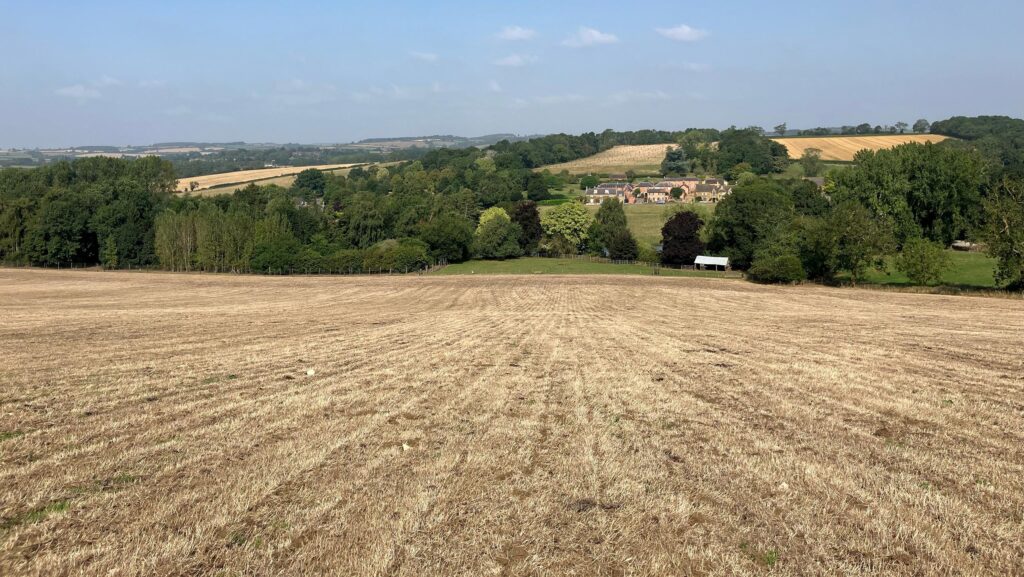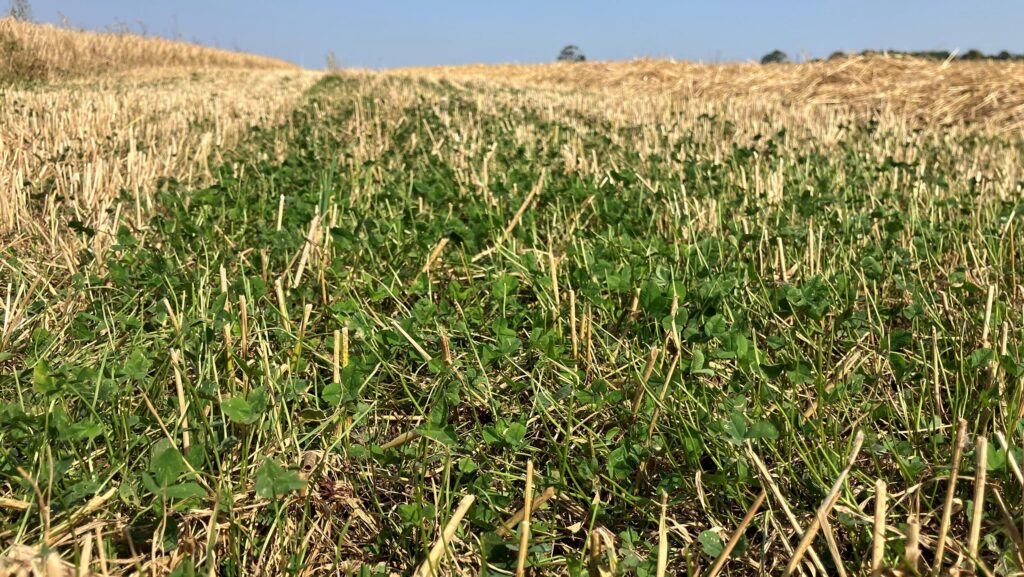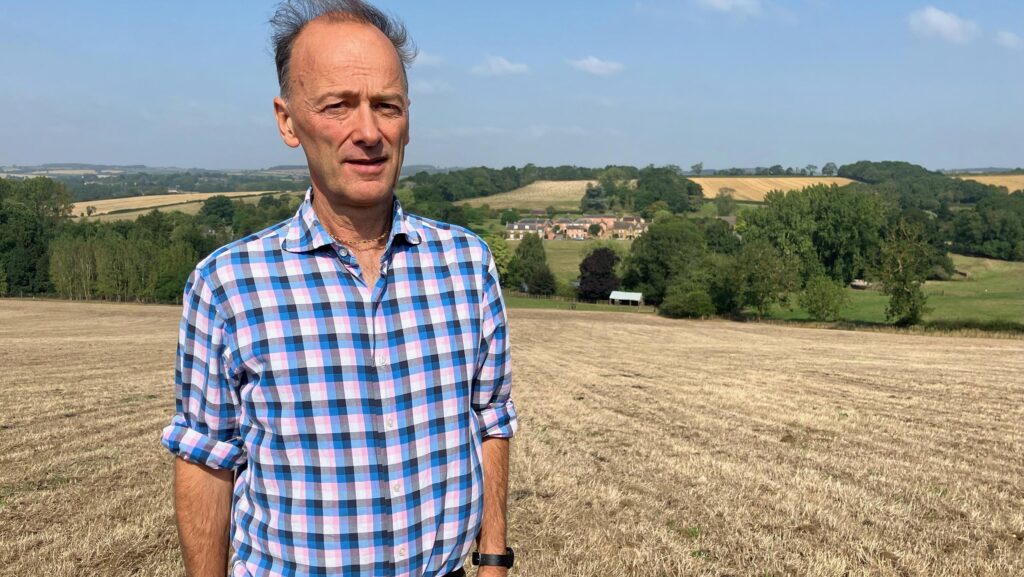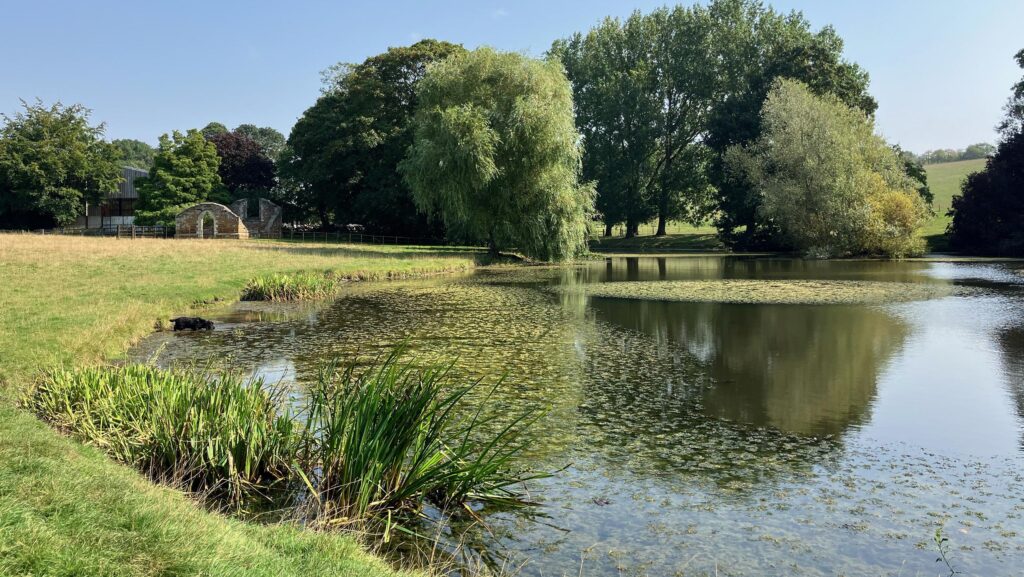Pioneering arable farm sells carbon credits to top Formula 1 team
 © MAG/Emma Gillbard
© MAG/Emma Gillbard A pioneering arable farm in Leicestershire has become the first farm in the UK to sell measured carbon credits to a range of buyers on the open market, including the Mercedes-Benz Formula 1 team.
Blaston Estate in the heart of rural Leicestershire generated 5,000t of additional soil carbon in its first year, equating to £100,000-£150,000, with current credits trading at £20-£30/t.
See also: How different forms of organic matter affect soil health
Hylton Murray-Philipson, owner of the estate, believes that having exhausted the soil through years of continuous arable cropping, the heavy clay soils have a 20-year journey of sequestration and recovery ahead.
Selling credits
The three Ms – Manage, Measure and Monetise – is Hylton’s new farming philosophy, enabling him to sell surplus carbon credits to a host of private firms.
Mercedes-AMG Petronas F1, the soft drinks company Dash, Weatherbys Bank, Scania truck dealership TruckEast and Helical, a London property development company, were all buyers of the credits.
“I deliberately sold to a range of different companies to build diversity into the business model” says Hylton.
However, as carbon markets are based on the idea of additionality, where land owners are paid on the difference in carbon accumulation on an annual basis, the revenue stream could potentially come to a grinding halt.
“Some people worry that we will reach a carbon saturation point,” says Hylton.
But current estimations show the estate has 20 years of carbon sequestering ahead, so there is plenty of time to continue to build carbon.
“Through the power of harnessing private carbon markets, farmers have the ability to monetise these gains. Perhaps once we have reached the carbon saturation point, the government will be able to provide an incentive to maintain carbon stocks at this level,” says Hylton.
Working closely with consultancy firm Fisher German, independent agronomy firm Indigro and soil monitoring firm Ecometric, a detailed soil organic matter testing methodology was produced.
Following analysis from Ecometric and in-depth due diligence testing, credits were listed on the Regen Network platform and sold via carbon finance specialist Respira International.
The 5,000t of carbon generated in its first year was calculated with all on-farm emissions accounted for and 20% placed into a buffer pool.
This figure was lower in subsequent years due to poor weather, but all have been positive in carbon accumulation.
How it all started
It was 2018 when Hylton realised his farming practices were in need of change.
An intensive rotation based heavily on winter wheat/oilseed rape with no livestock was beginning to expose itself to a host of different problems, namely soil compaction and blackgrass.
The grassweed was beginning to rear its ugly head across much of the estate.
When speaking to an Australian friend, Hylton realised that the grassweed wasn’t an issue in itself, but it was a symptom of what was happening to his soil below. Investigating closer, he discovered soils were heavily compacted, inert and devoid of life.
In contrast, areas of woodland on the farm were full of life and biological activity. The difference in soil quality was clear.
Hylton wanted to mimic this across much of the arable area. Battling with soil challenges and weather difficulties with flash floods washing away topsoil, Hylton was determined to improve soil health and retain the farm’s most important asset.
As the farm was made up of heavy clay soils, Hylton knew there was huge potential to sequester carbon.
Soil was to become the centre stage of his farming system, thinking about long-term sustainability rather than short-term profitability.
“We learn by doing things. Do not let the pursuit of perfection stand in the way of progress,” he says. “The way to get ahead, is to get started.”
Rotation change
The main difference in the rotation is 50% of the 400ha farm is now down as grassland, with a flock of 500 ewes and 60 head of cattle, plus followers reintroduced to the land.
The other major difference is the strategic establishment of a clover living mulch understorey across 120ha of spring cereals, which has drastically cut the farm’s biggest carbon emitter – artificial nitrogen fertiliser.
Organic matter levels of arable fields are measuring 2-4%, but Hylton is striving to increase this to 9% – the same level as the estate’s permanent pasture.
“At Blaston, we have worked to improve soil quality by diversifying our crops and focusing on a more natural way of farming, which has enabled the soil to take in more carbon,” he says.
Cover crops and no plough
Spring crops now make up more than half of the arable rotation, including spring oats for human consumption and spring malting barley.
The proportion of spring cropping has increased as a result of the strategic establishment of a spring crop into a clover mulch and integration of cover crops.
“Previously, our rotation would maximise the winter wheat area. But now carbon is one of the main income streams, this has given us the opportunity to bring in other crops and diversify our system,” says Hylton.
Cover crops are one of the main carbon accumulators. Black oats and phacelia grazed by sheep in the spring is a popular mix on the estate.
“With more spring crops, we can establish more overwinter covers to build carbon and keep the soil covered,” he adds.
Together with the integration of livestock, reduced fertiliser, use of cover crops and minimal soil disturbance, Hylton has seen his soils come back to life, with some fields having worm counts as high as 50 worms/sq m.
“By simply no longer ploughing, we are reducing the exposure of carbon to oxygen in the air. And we are no longer exposing worms, which are a farmer’s best friend, to their worst enemy – the seagull,” he says.
“Instead, we’re letting nature do the work for us. The worms in our soils are improving its aggregation, porosity and water filtration.”

© MAG/Emma Gillbard

Hylton Murray-Phillipson © MAG/Emma Gillbard

© MAG/Emma Gillbard
Undersowing saves 30kg N/ha of purchased nitrogen
A permanent white clover understorey has been successfully established across 120ha at Blaston Estate in Leicestershire, with the first leys established still performing well in their sixth year.
Spring crops are direct-drilled into the living mulch, acting as an effective way to smother weeds and reduce rates of artificial fertiliser.
Nitrogen release from clover can be difficult to estimate as it depends on the age of the understorey and the growing season, which impacts nodulation.
Typically, on a well-established understorey, nitrogen can be reduced by 30kg/ha, which equates to 25% of total N requirement in a spring barley crop grown on the estate.
As temporary grass and clover leys are incorporated into the arable rotation, this provides an excellent opportunity to establish a clover mulch.
Grass leys are sprayed-off with glyphosate in the autumn, which kills the grass and leaves the clover standing.
This allows a good entry to direct-drill winter wheat and an opportunity to top-up the ley with clover as required.
The estate’s flock of sheep are used to tightly graze the clover in the spring, stressing the crops so it releases nitrogen into the soil ready for the following crop to utilise.
Any weeds that creep into the mulch, such as blackgrass and thistles, can be sprayed out with glyphosate and clover topped up as required.
Blaston Farm formed a biodiversity partnership with Severn Trent in 2021, which has helped fund a number of environmental projects – the clover understorey being one of them.
As it nears the end of the fourth year of this agreement, Blaston Farm is looking to understand how it can further enhance biodiversity on the estate.
Estate owner Hylton hopes to maintain the current relationship with Severn Trent and understand how the farm can utilise and maximise private and public funding across the estate.
How farming practice has changed over three decades at Blaston
Farmworker John Lane has been working at Blaston Estate for more than 30 years.
He says he’s seen many farming practices change over those three decades, but selling carbon credits is one of the most unique “products” the farm has sold.
“At the end of the day, the farm is still doing business.
“We are still growing crops, and selling carbon has provided a degree of financial certainty for the farm,” he says.
“It can be a great way for farmers to carry on farming and make up any difference in loss of government funding as the Basic Payment Scheme goes.”
Agri-business consultant on carbon markets
Selling carbon credits is a relatively new market and the longevity of such practices is somewhat unknown, not to mention the long-term agreements farmers may find themselves signing up to.
Vicky Povey, agri-business consultant at Fisher German, advises farmers who are using regenerative techniques to measure soil carbon and track against emissions to generate credits.
“The carbon market is growing and companies are looking for ways to offset their emissions. If a farm can demonstrate it is sequestering carbon over time via detailed analysis, it is a viable way of generating extra income,” she says.
“The number of credits generated depend on the soil type and weather conditions. When assessing farm suitability for carbon sequestration, it is worth assessing fields individually and bearing in mind the trade-offs associated with reduced cultivation.
“We know the soil cannot store infinite amounts of carbon, so it is uncertain exactly how long we can continue to increase soil organic matter.
“For farmers thinking about generating carbon credits, it is vital to get expert advice so they can be sure it is a viable option.”
Carbon credit stipulations
As with most – if not all – carbon credit agreements, Hylton Murray-Philipson must abide by a number of stipulations:
- Restrictions to cultivation depths. “Initially cultivation below 10cm was not permitted at Blaston, however, this rule was not implemented in later projects. At Blaston, individual field derogations can be permitted if evidence shows low levels of cultivation will benefit crop cover and in-turn soil organic matter,” says Vicky.
- Net carbon sequestration is calculated using whole farm emissions. “A project area is decided at the start (which can be added to). However, emissions are calculated across the whole farm,” she says.
Credits must be registered so that only one credit can be sold only once. Credits are also committed to a
10-year permanence statement. “Once sold, that carbon must be sequestered for at least 10 years. There is also the buffer pool that links to this should environmental factors lead to carbon release,” Vicky says.

